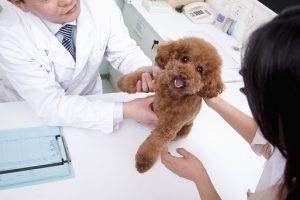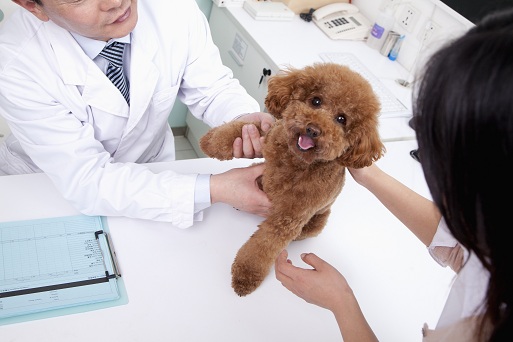
Dogs, with their boundless energy and inquisitive nature, may sometimes develop hot spots—a common dermatological issue that requires prompt attention. Discover the intricacies of identifying, treating, and preventing hot spots to ensure your furry friend’s well-being.
�
Spotting Hot Spots: A Guide for Pet Owners
Discovering signs of distress in your dog, like initial redness and swelling, is vital for identifying hot spots early. This guide enlightens pet owners on the progression of painful lesions, emphasizing the crucial role of understanding these stages for prompt intervention.
The narrative stresses the significance of consulting with a veterinarian for a definitive diagnosis, ensuring your pet receives timely and appropriate care.
By recognizing symptoms and seeking professional guidance, this guide empowers pet owners to proactively address and alleviate their dog’s discomfort caused by hot spots.
The Origins of Hot Spots
Discovering the roots of hot spots in dogs is essential for addressing issues like excessive licking, scratching, or biting that lead to skin damage. These problems can be attributed to diverse factors, ranging from skin allergies, infections, parasites, behavioral concerns, to inadequate grooming practices.
The exploration of your dog’s fixation on specific areas unveils the intricate nature of hot spots, offering valuable insights. A comprehensive understanding of these causes empowers dog owners to take informed steps in addressing and preventing skin irritations.
This proactive approach contributes to the optimal health and comfort of your canine companion, ensuring a happy and itch-free life. Delving into the origins of hot spots allows for a more nuanced and effective strategy in maintaining your dog’s well-being.
Effective Treatment Strategies
During a hot spot crisis, swift and effective action is crucial to alleviate your dog’s discomfort and promote healing. Veterinary-recommended treatment protocols encompass several key steps to address hot spots comprehensively.
First and foremost, shaving the fur around the affected area is crucial. This not only aids in better visibility and access to the hot spot but also prevents further irritation and allows the skin to breathe.
Cleaning and disinfecting the affected area is the next critical step in the treatment process. Using a mild, pet-safe antiseptic solution helps eliminate bacteria and promotes a clean environment for healing.
Veterinarians often recommend gentle cleansing to remove debris and discharge from the hot spot, preventing secondary infections.
The significance of antibiotics cannot be overstated in treating hot spots. Your veterinarian may prescribe oral or topical antibiotics to combat bacterial infections, a common complication associated with hot spots.
Anti-itch medications, such as corticosteroids or antihistamines, are often administered to relieve your dog’s discomfort and discourage excessive scratching or licking, which can exacerbate the condition.
Maintaining cleanliness in the overall environment is crucial for the healing process. Regular bathing with mild, hypoallergenic shampoos can help keep your dog’s skin clean and reduce the risk of future hot spots.
Additionally, the use of an Elizabethan collar, often referred to as the “cone of shame,” is a vital accessory during the recovery period. This prevents your dog from further irritating the hot spot by licking or chewing, allowing the area to heal undisturbed.
Preventing Hot Spots: A Proactive Approach
A proactive approach to preventing hot spots involves addressing the root causes of itching and implementing a range of preventive measures. Regular grooming habits play a pivotal role in preventing hot spots.
Brushing your dog’s coat helps distribute natural oils, preventing matting and reducing the risk of skin irritations. Regular inspection of your dog’s skin allows you to detect any signs of redness, irritation, or potential hot spots early on.
Proper ear care is essential in hot spot prevention. Regularly cleaning your dog’s ears helps prevent moisture buildup and reduces the likelihood of ear infections, a common trigger for hot spots.
Additionally, proactive flea and tick prevention are crucial. These parasites not only cause itching but can also transmit diseases that may lead to hot spots. By keeping your dog free of fleas and ticks, you minimize the risk of hot spot development.
Engagement is another key aspect of preventing hot spots, especially those triggered by over grooming due to boredom, stress, or anxiety.
Providing mental stimulation through interactive toys, regular exercise, and positive reinforcement can help curb destructive behaviors and minimize the likelihood of hot spots.
Repellent Flea and Tick Collar for Dogs and Puppies
Holistic Care: Supplements and Regular Check-ups
Taking a holistic approach to canine skincare involves considering the overall well-being of your dog. Consult with your veterinarian about incorporating supplements into your dog’s diet, such as fish oil.
Rich in omega-3 fatty acids, fish oil promotes healthy skin, reduces inflammation, and contributes to overall skin resilience. However, it’s crucial to consult with your veterinarian before introducing any supplements to ensure they are appropriate for your dog’s specific needs.
Regular veterinary check-ups are paramount, particularly for aging dogs. Aging can bring about changes in skin health, and early detection of potential issues is essential.
Regular check-ups allow your veterinarian to assess your dog’s skin condition, identify any underlying problems, and recommend preventive measures or treatments as needed.
In conclusion, a multi-faceted approach to treating and preventing hot spots in dogs involves swift and effective treatment strategies, a proactive approach to prevention, and holistic care.
By understanding the significance of each aspect and collaborating with your veterinarian, you can ensure your dog’s skin health is prioritized, promoting a happy and comfortable life for your canine companion.
Read more:
Can Dogs Get Skin Conditions From Stress
What Is A Veterinary Dermatologist
How Do You Diagnose Dermatitis In Dogs? A Comprehensive Guide
�
Conclusion: Nurturing Your Dog’s Skin Health
In conclusion, prioritizing your dog’s skin health is fundamental to being a responsible pet owner. This involves not only identifying but also preventing hot spots, demonstrating your commitment as a vigilant guardian.
By gaining insight into the intricacies of hot spots, you equip yourself with the knowledge needed for early detection and effective intervention. Timely measures and a proactive approach are pivotal, serving as a protective shield against the discomfort associated with hot spots.
By adopting these practices, you not only enhance your pet’s overall well-being but also strengthen the bond between you and your four-legged companion. Responsible care, coupled with a keen awareness of your dog’s skin health, ensures a happy and thriving life for your furry friend.
Further Reading:
Veterinary college alumna stars in new Nat Geo series
Analgesic Effect of Meloxicam in Canine Acute Dermatitis
Olivry Receives Lifetime Achievement Award for Groundbreaking Dermatology Career
Recommended Resources: Decoding Your Dog by the American College of Veterinary Behaviorists
Decoding Your Dog’s Excessive Barking
Manual of clinical behavioural medicine for dogs and cats
handbook of applied dog behavior and training
canine behavior: insights and answers
FAQs:
Can dogs get skin conditions from stress?
Yes, dogs can develop skin conditions due to stress. Stress may lead to behavioral changes, causing excessive licking, scratching, or biting, resulting in skin problems. Stress-induced conditions may include hot spots, allergic reactions, or exacerbation of existing skin issues. The release of stress hormones can impact the immune system, making dogs more susceptible to dermatological issues. Identifying and addressing the underlying stressors, along with providing a calm and supportive environment, can help mitigate and prevent stress-related skin conditions in dogs. Regular veterinary check-ups are crucial for accurate diagnosis and tailored treatment plans.
Can dogs have a dermatologist?
Yes, dogs can have a dermatologist, known as a veterinary dermatologist. These specialized veterinarians are trained to diagnose and treat skin, coat, ear, and nail-related issues in dogs. If a dog experiences persistent skin problems, allergies, or dermatological conditions, a veterinary dermatologist can provide specialized care. They may perform diagnostic tests, recommend specific treatments, and offer solutions for managing skin disorders in dogs. Seeking the expertise of a veterinary dermatologist ensures that your canine companion receives tailored and effective care for dermatological issues, contributing to their overall health and well-being.
What is a veterinary dermatologist?
A veterinary dermatologist is a specialized veterinarian who focuses on diagnosing and treating skin conditions in animals. Trained extensively in dermatology, these professionals address issues such as allergies, infections, and other skin disorders in pets. They possess expertise in conducting skin examinations, biopsies, and interpreting diagnostic tests to provide accurate diagnoses. Veterinary dermatologists also develop tailored treatment plans, which may include medications, therapies, or dietary recommendations, to improve the skin health of animals. These specialists play a crucial role in addressing skin-related issues in pets and work collaboratively with general veterinarians to ensure comprehensive care for animals with dermatological concerns.
